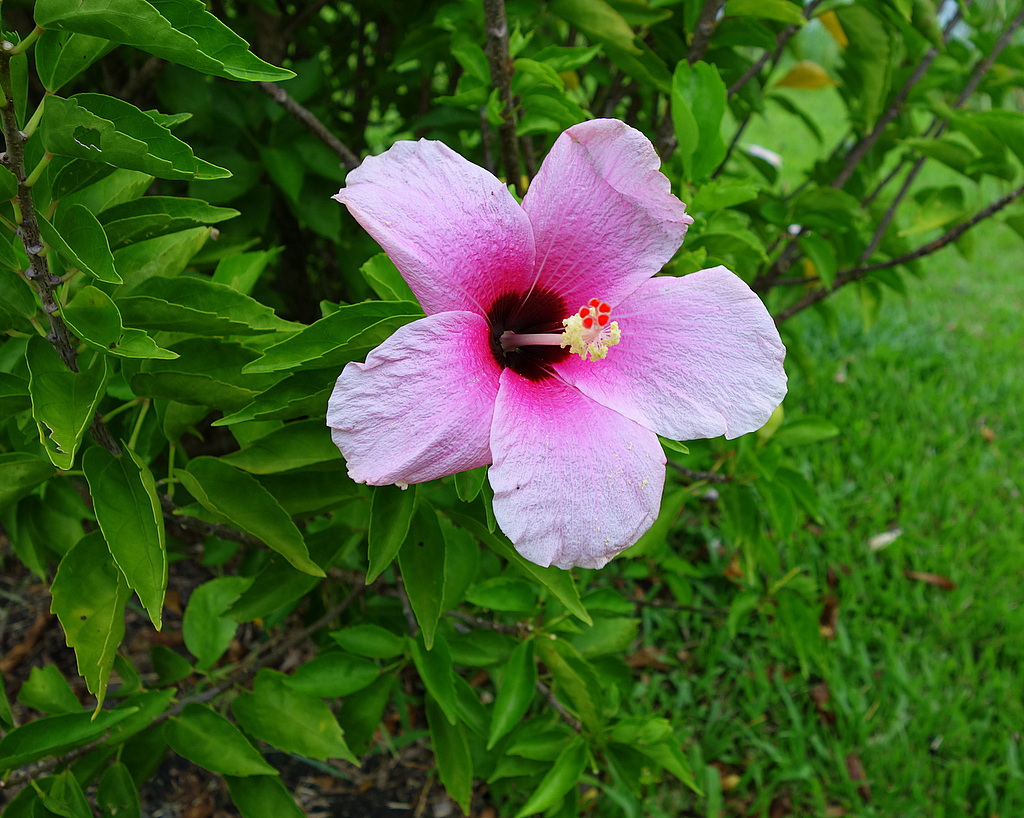
We were supposed to visit Samoa, on December 8, and then the next day, American Samoa, also on December 8. They are one people historically, sharing a culture, and a language. The vagaries of the International Dateline mean that Samoans, traveling from one country to the other, have to ask “are you arriving on your December 8, or our December 8?”
However, Samoa is an independent nation, whereas American Samoa is a U.S. territory.

It’s a complicated story, but when we arrived in Apia, Samoa, I was hoping to learn all about it. Sadly, after we docked and the first 50 people went ashore, the ocean swell grew so strong that three lines holding us to the dock were snapped. even though we had the engines running to keep us in place. The captain quickly moved us out into the bay before either the ship or the dock could be damaged, and the crew set about finding and collecting the passengers that were already on shore. Many were gathered for an excursion, so they were easily retrieved, but the others had some interesting experiences. The local authorities put out a call to taxi drivers to find the foreigners, but several passengers thought they were being scammed when a stranger in a taxi pulled up and said “Hurry, your ship is leaving. $5 and I will take you there.” Eventually everyone understood the situation, got back on board, and we set sail for American Samoa without visiting Apia, which I regretted.
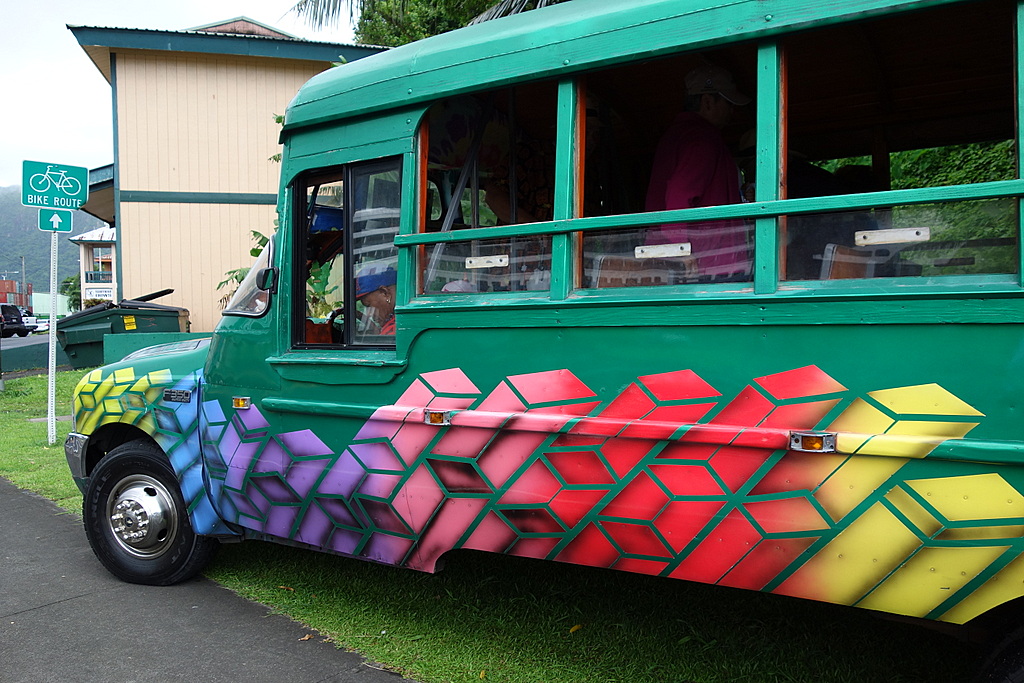
There’s not a lot for a day-tripping tourist to do in Pago Pago (pronounced Pango Pango), American Samoa, so I went on a colorful bus tour of the island. The windows are down when you need cooling and up when it rains.

The bus was decorated for Christmas.
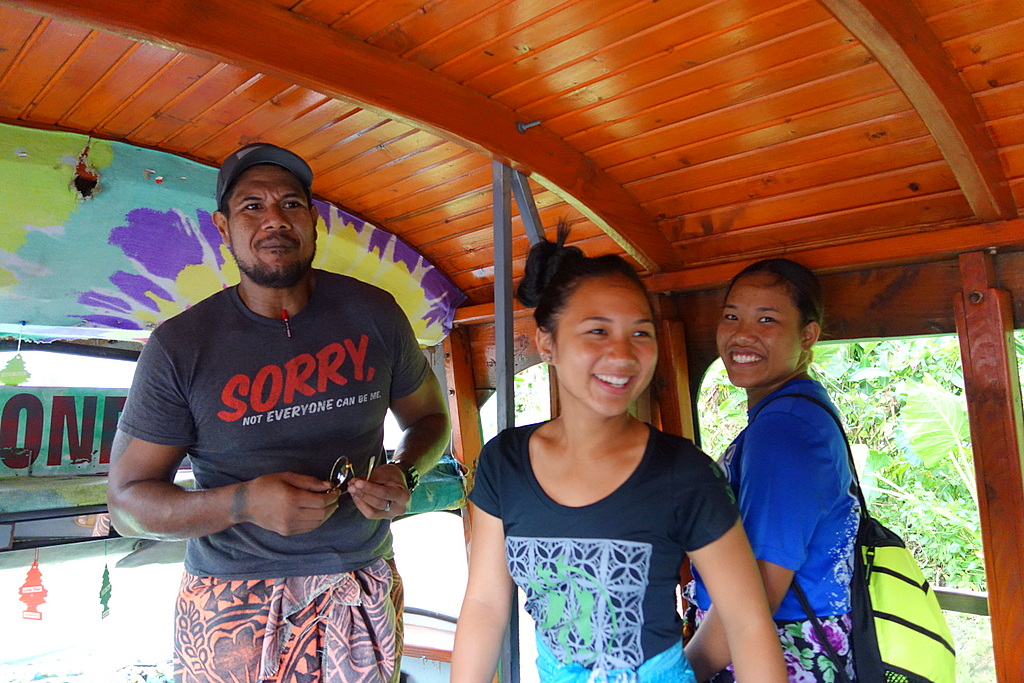
Our guide was trying to train three new workers for the business, her cousin, and two high school girls. They were all delightful, but frankly I don’t think any of them has much of a future as a tour guide. Actually, the girls were thinking about a career in the military after graduation. American Samoa has poor employment prospects, and the highest military enlistment rate of any U.S. state or territory.

Our tour began with an uphill drive to the site of Pago Pago’s cable car, once the longest aerial tramway in the world. It’s been rusting away since a Navy plane hit the cables in 1980 and crashed, killing six people.
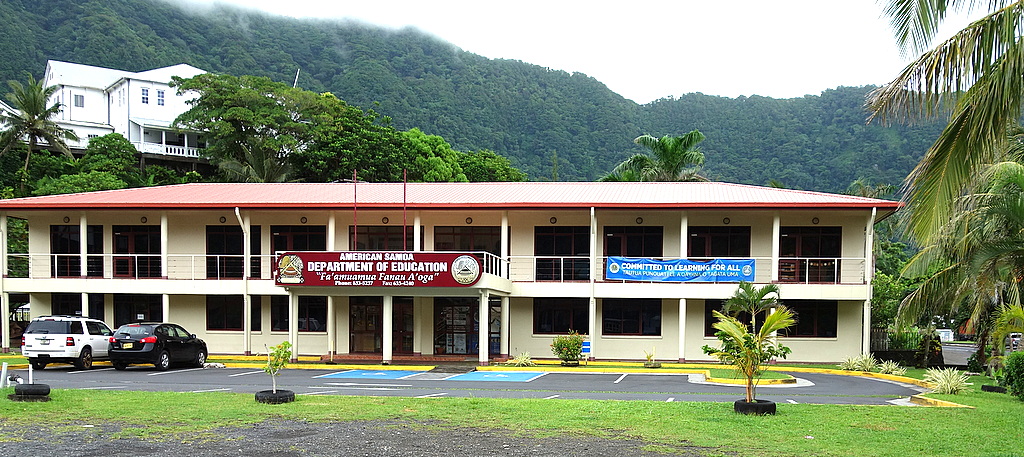
We passed the Department of Education’s offices,
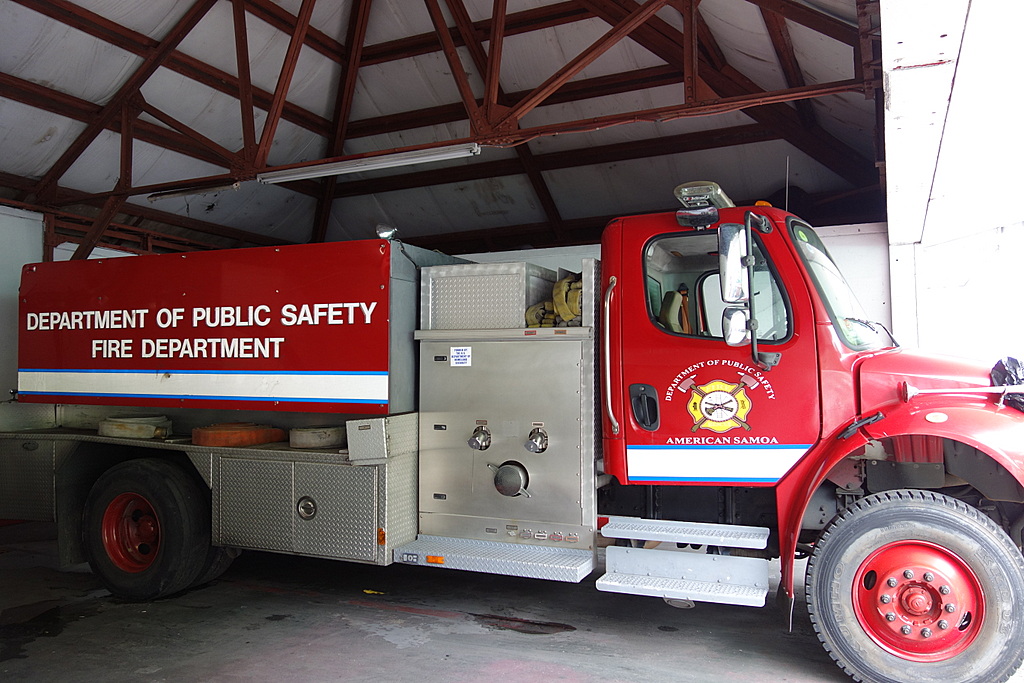
the town firehouse, about which our guide said “somehow they can never seem to put out any fires,”
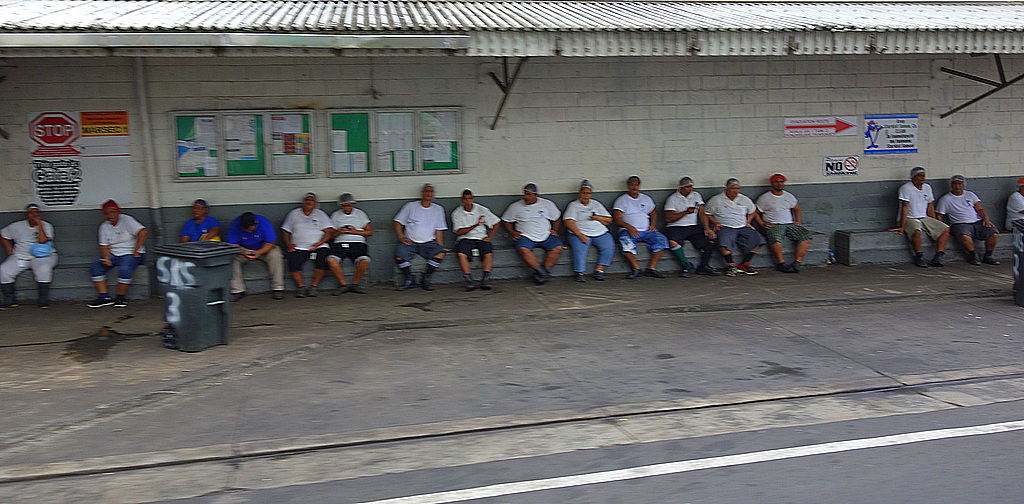
several tuna canning factories, where the workers were on break, and visited the museum.
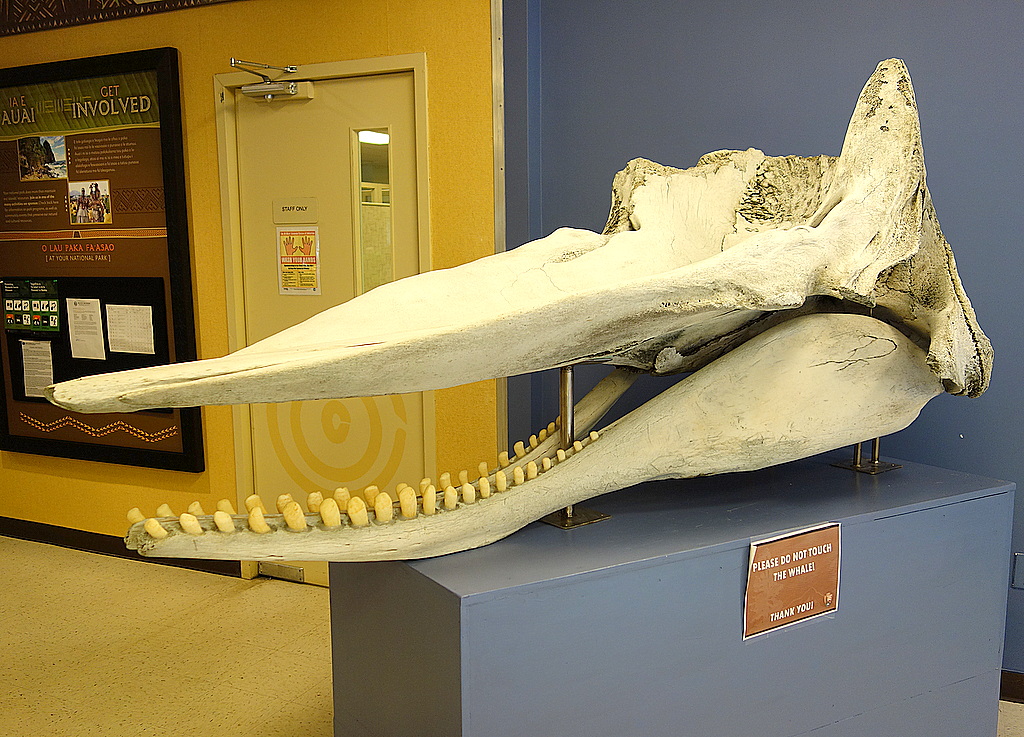
There we saw the recently discovered jaw of a baby sperm whale,
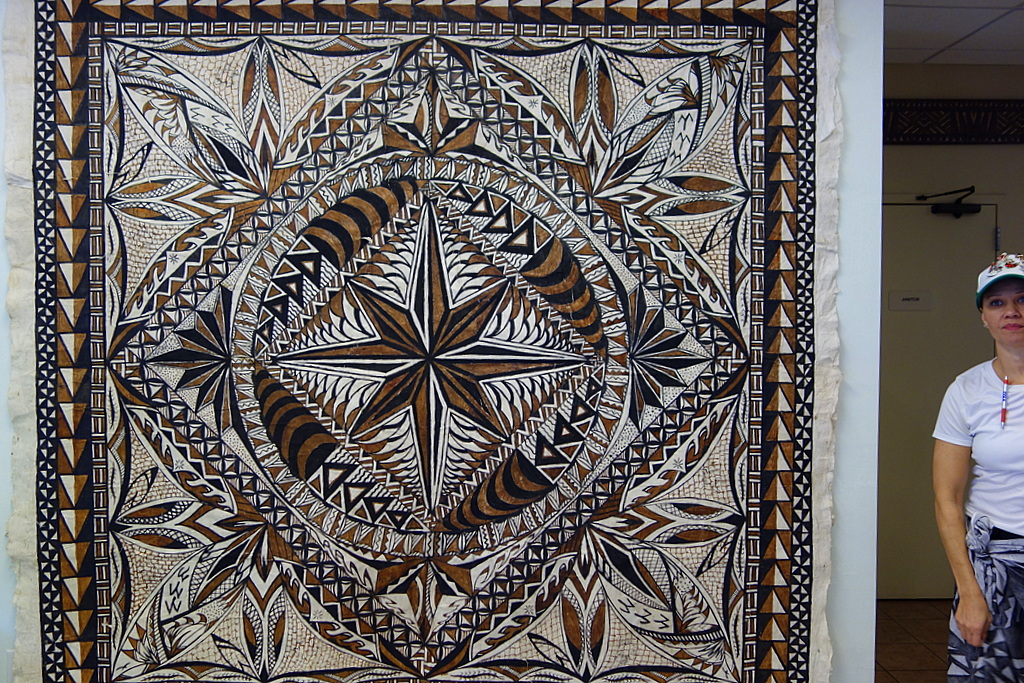
and a huge and beautiful tapa, which is a traditional type of painting on bark (docent for scale).
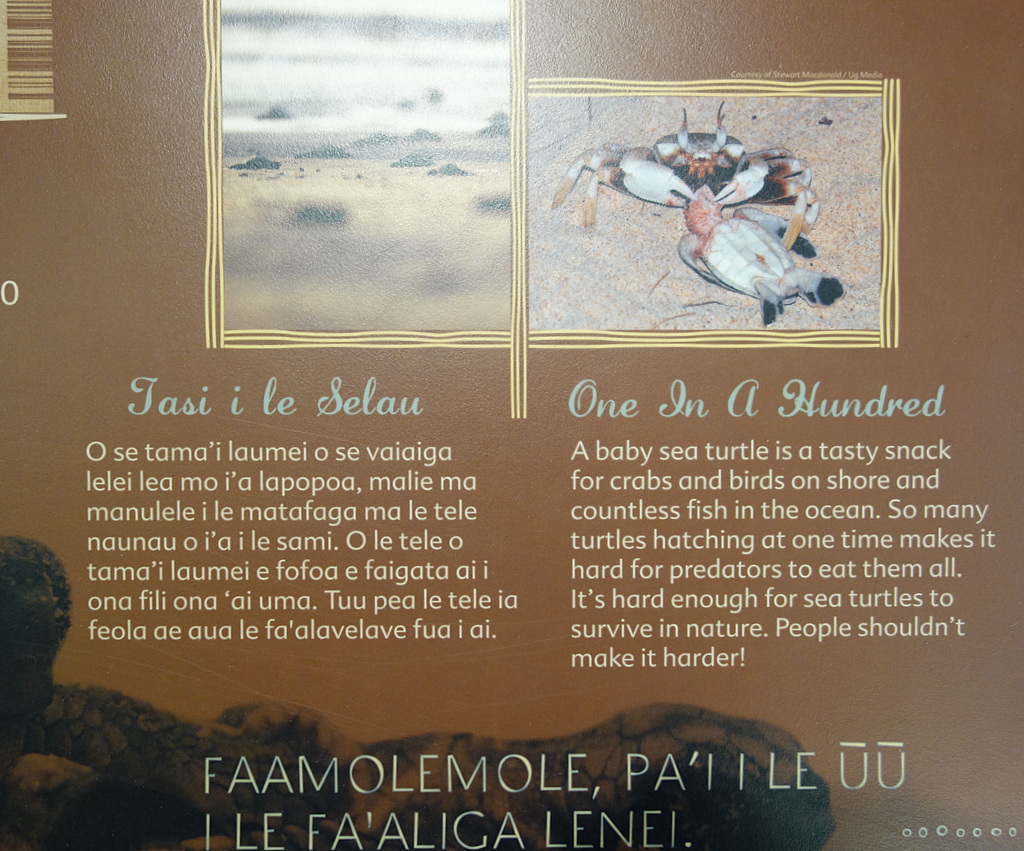
All of the interpretive signage was in two languages. So if you’ve ever wondered what the Samoan language looks like, here you go.
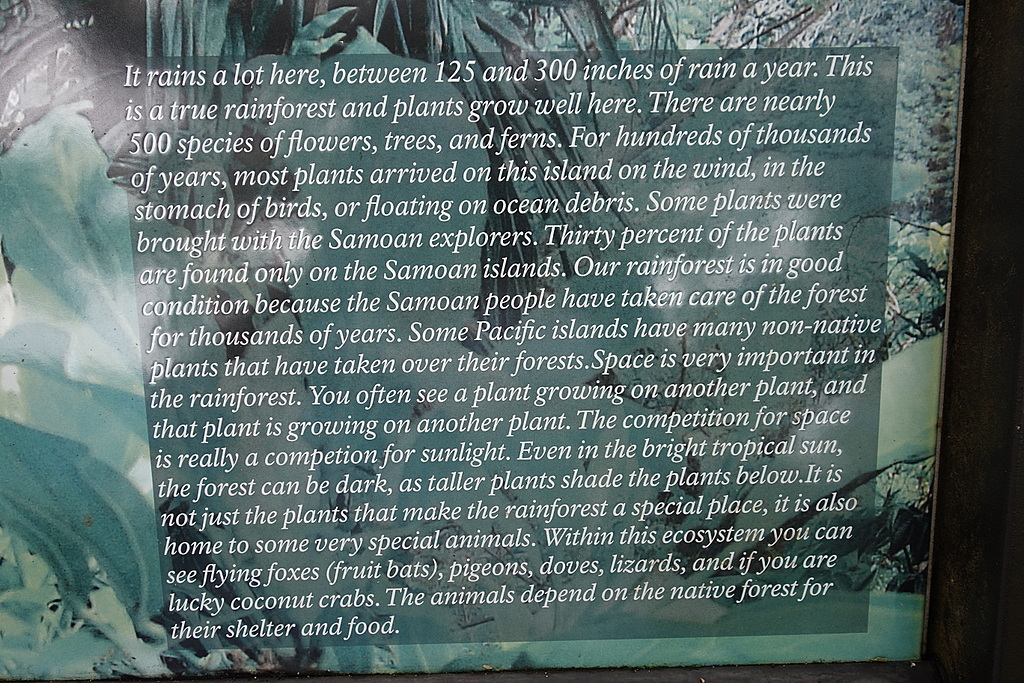
We crept along at a gear-grinding snail’s pace, ever upward through the rain forest, and got a little lesson in rain forest ecology.
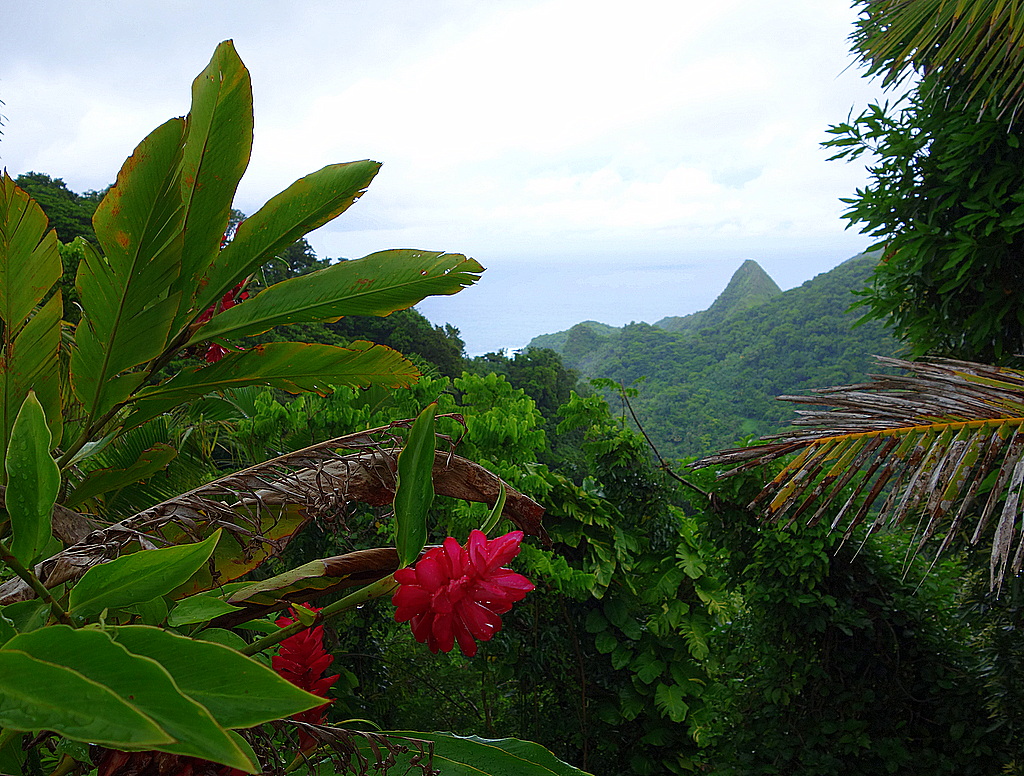


From the mountain top we were able to look down over the harbor and even see our ship in the distance. When people asked how the tour had been my answer was invariably “green.” It’s one of the greenest and most fertile lands I’ve ever seen.

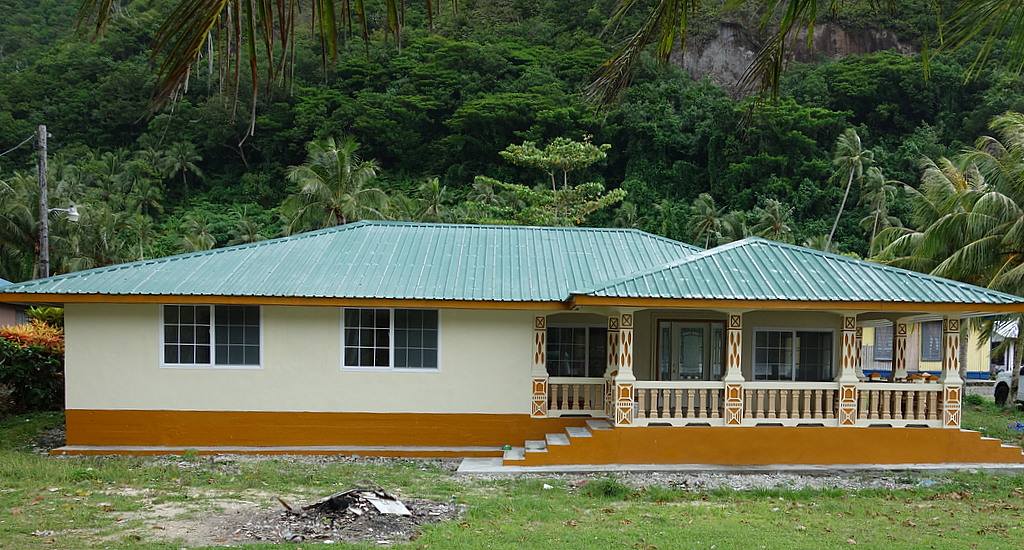
We also visited a tiny village in a far corner of the island, which had some very pretty houses,
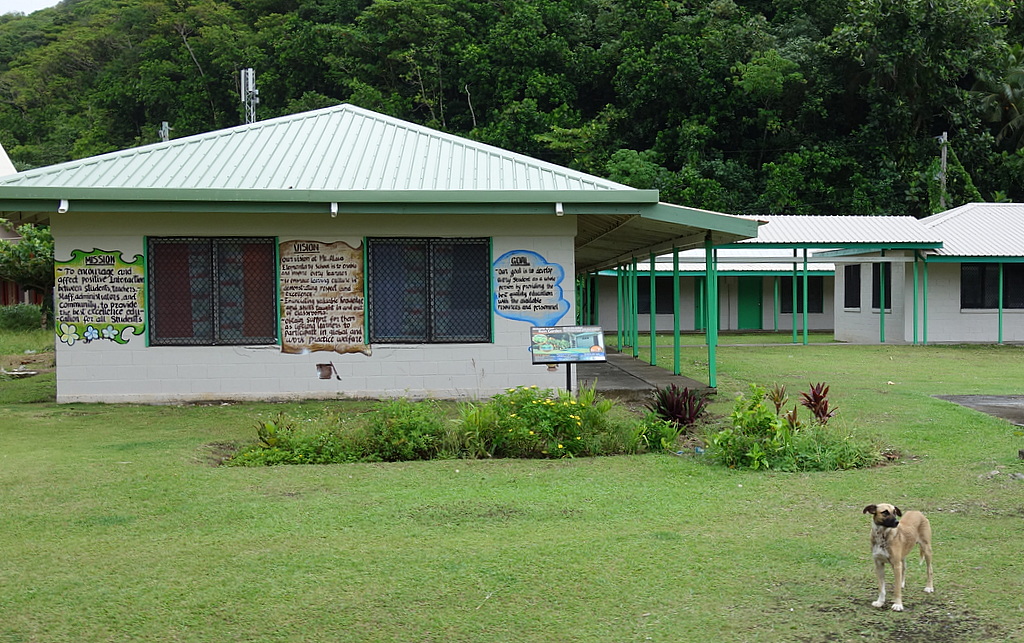
and a small school. Teachers there are mainly volunteers, often on religious missions.
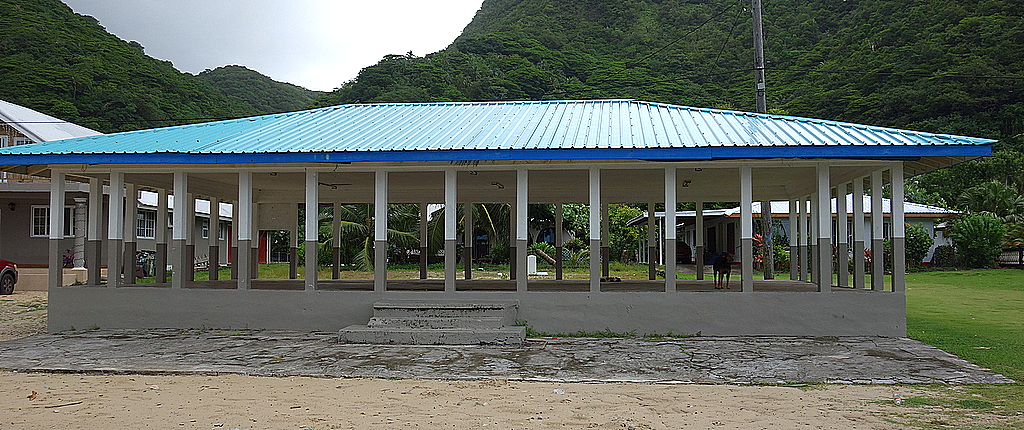
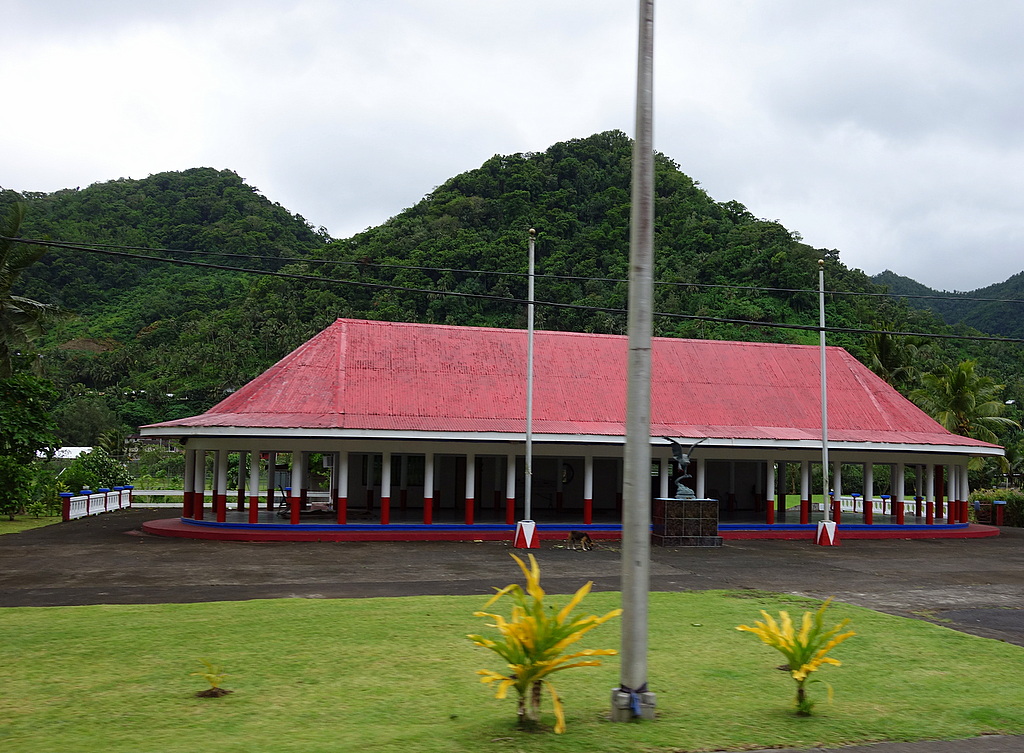
Every family has a fale Samoa, which can hold many people and is used for all kinds of ceremonies and gatherings.
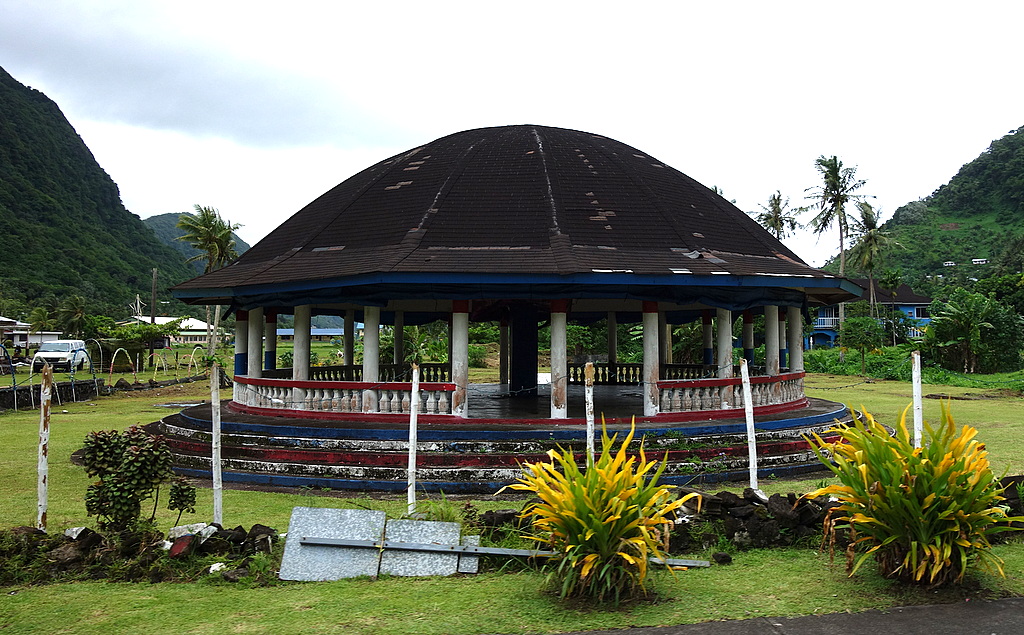
Sometimes they are also municipal gathering places. All in all it was a low-key visit to what felt like a low-key country. But everyone has land, and thus a place to build a home and plant a garden. I would have liked more time to understand the place, but overall my impression is that it’s a pleasant and peaceful island. I just wish that the kids had better alternatives to enlistment.